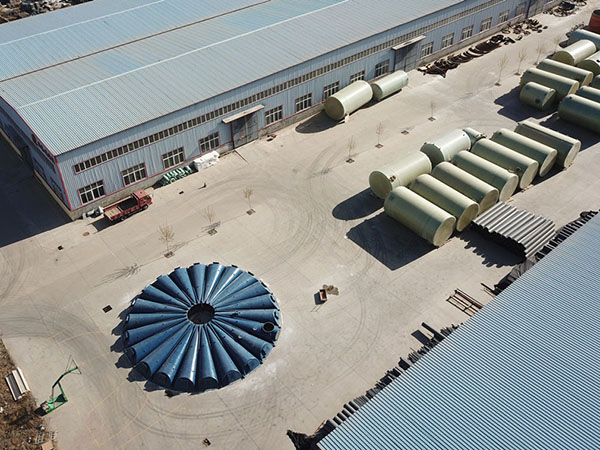
-
 Afrikaans
Afrikaans -
 Albanian
Albanian -
 Amharic
Amharic -
 Arabic
Arabic -
 Armenian
Armenian -
 Azerbaijani
Azerbaijani -
 Basque
Basque -
 Belarusian
Belarusian -
 Bengali
Bengali -
 Bosnian
Bosnian -
 Bulgarian
Bulgarian -
 Catalan
Catalan -
 Cebuano
Cebuano -
 China
China -
 China (Taiwan)
China (Taiwan) -
 Corsican
Corsican -
 Croatian
Croatian -
 Czech
Czech -
 Danish
Danish -
 Dutch
Dutch -
 English
English -
 Esperanto
Esperanto -
 Estonian
Estonian -
 Finnish
Finnish -
 French
French -
 Frisian
Frisian -
 Galician
Galician -
 Georgian
Georgian -
 German
German -
 Greek
Greek -
 Gujarati
Gujarati -
 Haitian Creole
Haitian Creole -
 hausa
hausa -
 hawaiian
hawaiian -
 Hebrew
Hebrew -
 Hindi
Hindi -
 Miao
Miao -
 Hungarian
Hungarian -
 Icelandic
Icelandic -
 igbo
igbo -
 Indonesian
Indonesian -
 irish
irish -
 Italian
Italian -
 Japanese
Japanese -
 Javanese
Javanese -
 Kannada
Kannada -
 kazakh
kazakh -
 Khmer
Khmer -
 Rwandese
Rwandese -
 Korean
Korean -
 Kurdish
Kurdish -
 Kyrgyz
Kyrgyz -
 Lao
Lao -
 Latin
Latin -
 Latvian
Latvian -
 Lithuanian
Lithuanian -
 Luxembourgish
Luxembourgish -
 Macedonian
Macedonian -
 Malgashi
Malgashi -
 Malay
Malay -
 Malayalam
Malayalam -
 Maltese
Maltese -
 Maori
Maori -
 Marathi
Marathi -
 Mongolian
Mongolian -
 Myanmar
Myanmar -
 Nepali
Nepali -
 Norwegian
Norwegian -
 Norwegian
Norwegian -
 Occitan
Occitan -
 Pashto
Pashto -
 Persian
Persian -
 Polish
Polish -
 Portuguese
Portuguese -
 Punjabi
Punjabi -
 Romanian
Romanian -
 Russian
Russian -
 Samoan
Samoan -
 Scottish Gaelic
Scottish Gaelic -
 Serbian
Serbian -
 Sesotho
Sesotho -
 Shona
Shona -
 Sindhi
Sindhi -
 Sinhala
Sinhala -
 Slovak
Slovak -
 Slovenian
Slovenian -
 Somali
Somali -
 Spanish
Spanish -
 Sundanese
Sundanese -
 Swahili
Swahili -
 Swedish
Swedish -
 Tagalog
Tagalog -
 Tajik
Tajik -
 Tamil
Tamil -
 Tatar
Tatar -
 Telugu
Telugu -
 Thai
Thai -
 Turkish
Turkish -
 Turkmen
Turkmen -
 Ukrainian
Ukrainian -
 Urdu
Urdu -
 Uighur
Uighur -
 Uzbek
Uzbek -
 Vietnamese
Vietnamese -
 Welsh
Welsh -
 Bantu
Bantu -
 Yiddish
Yiddish -
 Yoruba
Yoruba -
 Zulu
Zulu
frp fuel tank
Understanding FRP Fuel Tanks A Comprehensive Overview
In the ever-evolving landscape of fuel storage solutions, Fiberglass Reinforced Plastic (FRP) fuel tanks have emerged as a revolutionary alternative to traditional metal tanks. Designed to address the limitations and challenges posed by conventional materials, FRP fuel tanks offer numerous benefits that make them particularly appealing for various applications, including the automotive, marine, and industrial sectors.
What is FRP?
FRP, or Fiberglass Reinforced Plastic, is a composite material that combines a polymer matrix (typically polyester or epoxy resin) with glass fibers. This combination results in a lightweight, yet incredibly strong and durable material. FRP is known for its resistance to corrosion, chemical degradation, and environmental stress, which makes it an ideal candidate for fuel storage tanks.
Advantages of FRP Fuel Tanks
1. Corrosion Resistance One of the most significant advantages of FRP fuel tanks is their exceptional resistance to corrosion. Unlike metal tanks that can rust or corrode when exposed to harsh environmental conditions or corrosive fuels, FRP tanks remain structurally sound and do not succumb to such deterioration. This longevity ensures lower maintenance costs and longer service life.
2. Lightweight FRP tanks are considerably lighter than traditional metal tanks. This lightweight characteristic makes them easier to transport and install, reducing logistical challenges and labor costs during the setup process. Their lighter weight also means less structural support is needed, simplifying installation in various locations.
3. Flexibility in Design The manufacturing process of FRP allows for versatile design options. Tanks can be produced in various shapes and sizes to meet specific requirements for different applications. This flexibility ensures that FRP tanks can be customized for unique installations, making them a practical choice for a wide range of fuel storage needs.
4. Environmental Impact As environmental regulations become increasingly stringent, FRP tanks offer an eco-friendly solution. They are manufactured to prevent leaks and spills, mitigating the risk of soil and groundwater contamination. Additionally, the materials used in FRP tanks can be recycled, contributing to sustainable practices in the industry.
5. Insulation Properties FRP tanks often come with enhanced insulation properties, which can be crucial for maintaining the temperature of the stored fuel. This characteristic is particularly beneficial for fuels that are sensitive to temperature fluctuations, ensuring stability and efficiency in various operational environments.
frp fuel tank

Applications of FRP Fuel Tanks
The versatility of FRP fuel tanks makes them suitable for an array of applications
- Automotive Industry FRP tanks are increasingly used in vehicles that require lightweight and corrosion-resistant fuel storage options, contributing to improved vehicle performance and efficiency.
- Marine Industry Given their ability to withstand harsh environments, FRP fuel tanks are commonly utilized in boats and ships. They can endure constant exposure to seawater without deteriorating, thereby enhancing the safety and reliability of maritime operations.
- Industrial Use In industrial applications, FRP tanks serve as storage solutions for a variety of chemicals and fuels. Their ability to resist aggressive substances makes them an optimal choice for chemical processing plants and refineries.
Challenges and Considerations
While the advantages of FRP fuel tanks are noteworthy, there are also challenges to consider. The initial cost of FRP tanks can be higher than conventional tanks; however, this can be offset by their longer lifespan and reduced maintenance needs. Additionally, proper installation and adherence to regulations are crucial to ensure the integrity and safety of FRP tanks, as improper installation can lead to failures.
Conclusion
In conclusion, FRP fuel tanks represent a significant advancement in fuel storage technology, providing a robust, lightweight, and environmentally friendly alternative to traditional tanks. Their numerous benefits, such as corrosion resistance, design flexibility, and sustainability, position them as a practical choice for a wide range of applications across various industries. As businesses and industries continue to prioritize safety, efficiency, and environmental compliance, FRP fuel tanks are likely to play an increasingly prominent role in the future of fuel storage solutions.









